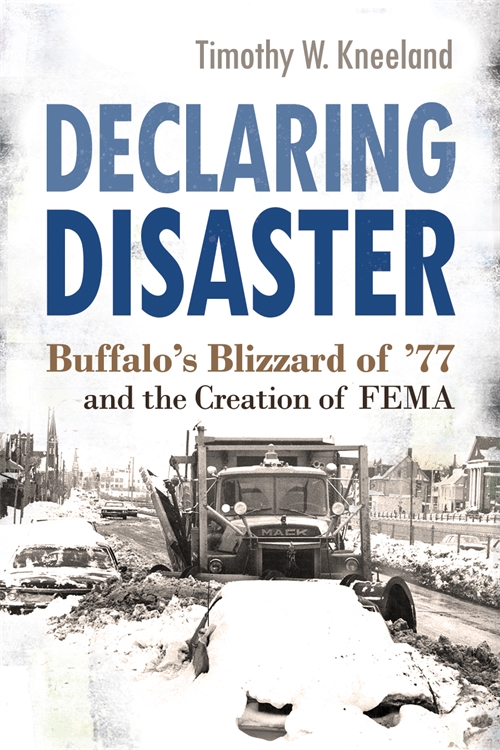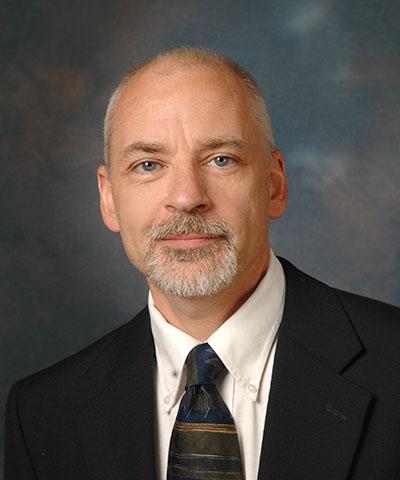A Conversation With “Declaring Disaster” Author Timothy Kneeland

I realized that the significance of the blizzard was much greater than just a regional event and it was this story I wanted to tell.
SUP: In a nutshell how would you describe your upcoming book “Declaring Disaster”?
TK: This is the story of the Blizzard of ’77 and how it reshaped public policy, politics, and the identity of Buffalo New York. Although the ground blizzard made for challenging and life-threatening conditions, decades of public policies favoring private automobiles at the expense of public transportation; suburbs over cities, and the lack of coordinated emergency management made it a disaster.
SUP: What drew you to the subject?
TK: Like most of my work, there is a personal connection. I grew up in the Buffalo area and experienced the blizzard first-hand as a child. Most of the histories of this event focus on the drama-in-real-life elements. When I began work on the history of natural disasters and public policy, I realized that the significance of the blizzard was much greater than just a regional event and it was this story I wanted to tell.
SUP: Moved by the plight of the people of western New York, President Jimmy Carter issued the first disaster declaration on account of snow. What made this blizzard of ’77 so epic?
TK: The ferocity of the storm made it remarkable. Blizzard conditions lasted for five days and combined with severe cold and wind chills of as much as sixty below, compounded by snowdrifts which rose to thirty feet in some places, burying highways, cars, houses, etc. Transportation became nearly impossible, some utilities failed, and people were trapped in their homes, places of work, or in public buildings for days.
SUP: What lessons did the city of Buffalo learn from this disaster?
TK: Buffalo learned not to underestimate snow! It has been a watchword for years that mayors and other public officials show preparation before winter and respond with alacrity when a storm hits Buffalo. They created a local emergency management team that works with the state of New York and created a regional cooperative with the towns and villages in Erie County to share equipment and aid one another.
SUP: What areas of the book do you feel readers will find most fascinating?
TK: I think there is something for everyone! Readers will come to understand how the snowy environment of Buffalo shaped the city, find out the history of snow-fighting efforts in Buffalo through the 2014 storm that dropped as much as eight feet of snow in some areas of Buffalo, and take with them a cautionary tale of how private automobile ownership may have made us all a little less safe in wintertime!
SUP: There’s a chapter in the book called “Grab a Six Pack.” Can you tell readers what this chapter is about and its importance?
TK: Following the Blizzard of ’77, Buffalonians elected one of the more controversial mayors in city history, Jimmy Griffin, who took to heart the lesson of the previous mayor and made snow removal a priority. Unlike the previous mayor, who openly worried about large snowfalls, Griffin famously responded to a winter storm that fell on a weekend with the line that everything was fine, and residents should just “grab a six pack and watch a good ball game.” In fact, all mayors following the Blizzard of ’77 have shown good instincts in dealing with snow control on city streets.
SUP: How have the decisions made during the Blizzard of ’77 impacted how storms are handled today?
TK: Snowbelt cities have become smarter and employed more resources and greater technology to effectively respond to snow. Buffalo and most snowbelt cities are prepared for average or above-average storms and these lessons may need to be applied to those cities in the South which will experience snowstorms due to climate change.
SUP: Who do you feel will find this book invaluable?
TK: I think the general public will find much to think about from this book; I also imagine it might be useful for environmentalists, disaster policy experts, and for those interested in the history of the Buffalo.

Timothy W. Kneeland is professor and chair of history and political science at Nazareth College. He is the author of Pushbutton Psychiatry: A Cultural History of Electroshock in America and Playing Politics with Natural Disaster: Hurricane Agnes, the 1972 Election, and the Origins of FEMA.
His new book, Declaring Disaster: Buffalo’s Blizzard of ’77 and the Creation of FEMA, can be preordered at press.syr.edu.
author photo courtesy of Nazareth College of Rochester
This entry was posted on February 8, 2021 by syrupress. It was filed under Author Spotlight .

Leave a comment